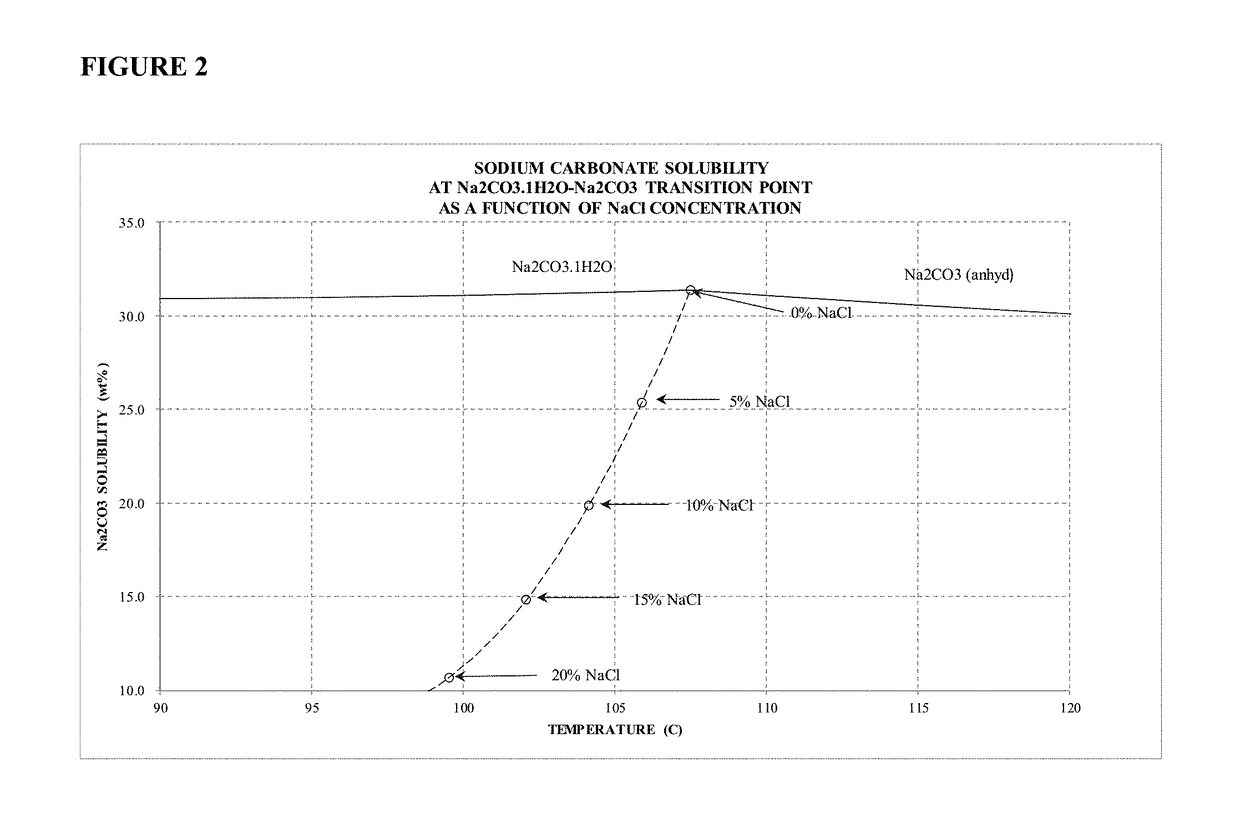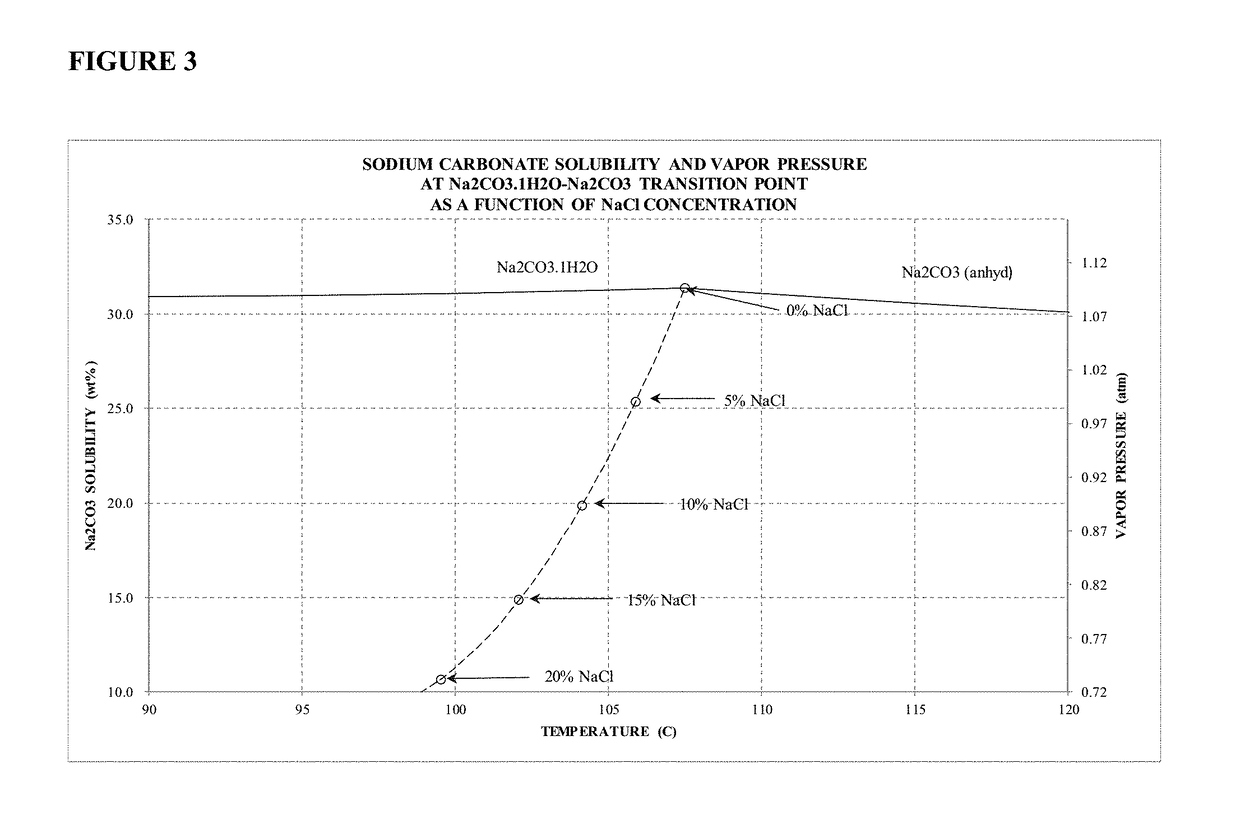Sodium carbonate monohydrate crystallization
a technology of sodium carbonate and monohydrate, which is applied in the field of sodium carbonate monohydrate crystallization, can solve the problems of poor crystal quality, rapid fouling of heat transfer equipment, and conventional techniques, and achieves the effects of increasing the yield of soda ash, increasing the time between cleanings, and increasing the impurity concentration
- Summary
- Abstract
- Description
- Claims
- Application Information
AI Technical Summary
Benefits of technology
Problems solved by technology
Method used
Image
Examples
example 1 (
Conventional and Comparative)
[0046]One thousand forty three (1,043) grams of deionized water and 253.4 grams sodium carbonate and 168.5 grams sodium chloride were placed in a 2-liter, baffled, round bottom glass flask. Agitation was started using a bladed stirrer rotating at 1455 rpm. After 475 grams of water were evaporated at a barometric pressure of 751 mm Hg (0.99 atm) and at a temperature of 108° C. over a period of 4 hours, the entire flask contents were emptied into a Büchner funnel and the crystal product was separated from the mother liquor by vacuum filtration. The filter cake had a mass of 175.6 grams and the filtrate weighed 822.5 grams. After drying at 100° C., the filter cake had a mass of 134.9 grams. Microscopic examination of the crystalline product revealed that amorphous anhydrous sodium carbonate was formed. The overall sodium carbonate yield was 67.6% of theoretical.
example 2
[0047]The same procedure was carried out as in Example 1 except for the operating pressure and temperature. The 475 grams of water were evaporated at an absolute pressure of 517 mm Hg (0.68 atm) and at a temperature of 96° C. The filter cake had a mass of 182.6 grams and the filtrate weighed 806.8 grams. After drying at 100° C., the filter cake had a mass of 141.6 grams. Microscopic examination of the crystalline product revealed that orthorhombic sodium carbonate monohydrate was formed. A micrograph of a sample of the product is shown in FIG. 6.
[0048]Example 2 is evidence that high purity sodium carbonate monohydrate may be formed from a solution containing significantly high concentrations of sodium chloride. The final liquor contained approximately 11.5 wt % sodium carbonate and 20.3 wt % sodium chloride. The overall sodium carbonate yield was 79.4% of theoretical yield.
PUM
| Property | Measurement | Unit |
|---|---|---|
| temperature | aaaaa | aaaaa |
| transition temperature | aaaaa | aaaaa |
| transition temperature | aaaaa | aaaaa |
Abstract
Description
Claims
Application Information
 Login to View More
Login to View More - R&D
- Intellectual Property
- Life Sciences
- Materials
- Tech Scout
- Unparalleled Data Quality
- Higher Quality Content
- 60% Fewer Hallucinations
Browse by: Latest US Patents, China's latest patents, Technical Efficacy Thesaurus, Application Domain, Technology Topic, Popular Technical Reports.
© 2025 PatSnap. All rights reserved.Legal|Privacy policy|Modern Slavery Act Transparency Statement|Sitemap|About US| Contact US: help@patsnap.com



